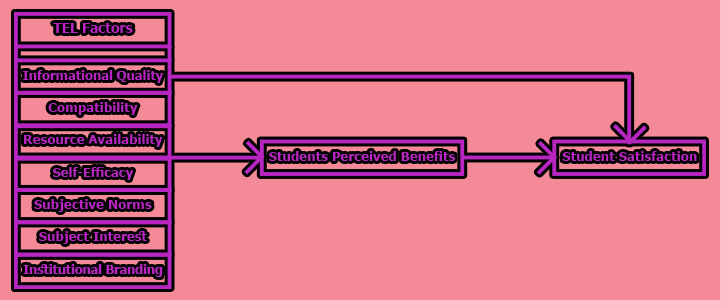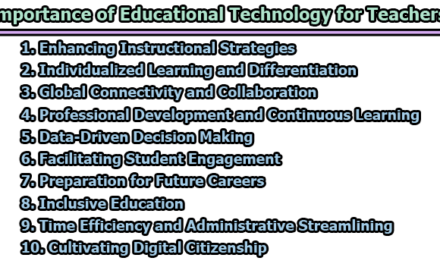Technology-Enhanced Learning (TEL):
In recent years, technology has revolutionized the way we live, work, and interact with each other. One domain that has significantly benefited from technological advancements in education. Technology-Enhanced Learning (TEL), also known as e-learning, mobile learning, or web-based learning, has emerged as a powerful tool to provide training and education courses to learners or students using computers and various digital technologies. TEL offers the flexibility of learning online or offline, breaking the barriers of time and space, and providing learners with a personalized and convenient learning experience. This article explores the multifaceted aspects of TEL, its significant benefits, and the key factors that influence its effectiveness in modern education.
Understanding Technology-Enhanced Learning (TEL):
Technology-Enhanced Learning (TEL) can be defined as the integration of computer and information technology to facilitate the delivery of educational content to learners. It offers a diverse range of ICT-based techniques, including websites, learning management systems, mobile and web apps, and various digital platforms. TEL breaks down the barriers of traditional education by enabling students, instructors, and professionals to engage in learning without the limitations of physical classroom settings.
Advantages of Technology-Enhanced Learning (TEL):
TEL has garnered significant attention due to the multitude of advantages it brings to the field of education. Some of the key benefits of TEL include:
a. Flexibility and Accessibility: One of the most apparent advantages of TEL is its flexibility. Learners can study at their own pace and convenience, whether online or offline. This flexibility is particularly beneficial for working professionals, part-time learners, or those with other commitments. TEL ensures that education is not limited by time or geographical boundaries.
b. Enhanced Learning Experience: TEL leverages multimedia elements, interactive exercises, simulations, and other digital tools to create an engaging and interactive learning experience. The use of visuals, audio, and interactive components enhances learners’ understanding and retention of complex concepts.
c. Diverse Learning Resources: Technology-Enhanced Learning opens up a vast repository of learning resources. These include open education resources, massive open online courses (MOOCs), educational videos on platforms like YouTube, eBooks, academic journals, articles, and more. Learners can access a wide range of materials to cater to their specific learning preferences and styles.
d. Improved Cognitive Abilities: TEL allows students to explore and comprehend learning concepts through various distributed resources. By engaging with diverse digital learning materials, learners can enhance their cognitive abilities, critical thinking skills, and problem-solving capabilities.
Factors Influencing the Effectiveness of TEL:
To ensure the successful implementation of Technology-Enhanced Learning, several crucial factors come into play. Let’s delve into some key factors that influence the effectiveness of TEL:
i. Informational Quality: The quality of the material and content provided by information systems significantly impacts the learners’ educational experience. High-quality, accurate, and relevant information satisfies learners’ informational needs, fostering a positive learning environment.
ii. Compatibility: The degree to which engaging in TEL aligns with students’ existing values, beliefs, and past information behavior affects their receptiveness to the technology. Compatibility with prior experiences and the needs of learners encourages the adoption of TEL.
iii. Resource Availability: The availability of online learning resources is essential for the success of TEL. These resources encompass a wide range of digital materials and courses, accessible through various platforms, catering to learners’ diverse needs and interests.
iv. Self-efficacy: Self-efficacy refers to learners’ confidence in their ability to perform specific behaviors related to TEL. Higher self-efficacy encourages active engagement and participation, leading to better learning outcomes.
v. Subjective Norms: Subjective norms encompass the influence of social groups and peers on an individual’s decision to engage with TEL. Positive perceptions from peers and societal groups can boost learners’ motivation and commitment to TEL.
vi. Subject Interest: Learners’ interest in the subject matter plays a significant role in their engagement with TEL. A compelling and engaging subject can motivate learners to explore and learn more through digital platforms.
vii. Institutional Branding: The image and reputation of an educational institution impact students’ perception of TEL. A strong institutional brand can instill confidence and trust in the quality of TEL offerings, attracting more learners to participate.
viii. Students’ Perceived Benefits: Learners’ perception of the benefits offered by TEL influences their willingness to adopt the technology. Clear communication of the advantages, such as time and cost savings, encourages learners to embrace TEL.
ix. Student Satisfaction: Ultimately, student satisfaction is a key measure of TEL effectiveness. Positive experiences and successful learning outcomes lead to higher satisfaction levels, encouraging learners to continue using TEL for their educational pursuits.
In conclusion, Technology-Enhanced Learning (TEL) has revolutionized the landscape of education by harnessing the power of technology to provide learners with flexible, accessible, and engaging educational experiences. TEL offers diverse learning resources, breaking down geographical barriers and accommodating various learning styles. The success of TEL implementation relies on factors such as informational quality, compatibility, resource availability, self-efficacy, subjective norms, subject interest, institutional branding, perceived benefits, and student satisfaction. As TEL continues to evolve, it holds the potential to create a more inclusive and equitable learning environment, empowering learners worldwide with knowledge and skills essential for success in the digital age.
Frequently Asked Questions [FAQs]:
What is Technology-Enhanced Learning (TEL)?
Technology-Enhanced Learning (TEL) refers to the usage of computer and information technology to deliver educational content and training to learners. It includes various methods such as e-learning, mobile learning, web-based learning, and technology-assisted learning.
What are the benefits of Technology-Enhanced Learning?
TEL offers numerous advantages, including flexibility and accessibility, enhanced learning experiences through multimedia and interactive elements, access to diverse learning resources, improved cognitive abilities, and the ability to study at one’s own pace and convenience.
What factors influence the effectiveness of TEL?
Several factors influence the success of TEL implementation, including the quality of informational content, compatibility with learners’ existing beliefs, resource availability, learners’ self-efficacy and interest in the subject, the influence of subjective norms and institutional branding, learners’ perceived benefits, and overall student satisfaction.
How does TEL contribute to educational advancement?
TEL revolutionizes education by transcending geographical limitations and providing learners with access to a vast array of digital learning resources. It fosters a more engaging and personalized learning experience, enhancing critical thinking skills, problem-solving abilities, and overall cognitive development.
Can TEL be suitable for various educational levels?
Yes, TEL can be adapted to suit learners of all educational levels, from primary school to higher education and even professional development. Its flexibility and diverse resources make it suitable for learners of different age groups and academic backgrounds.
How can institutions ensure the successful implementation of TEL?
Institutions can ensure successful TEL implementation by providing high-quality and relevant content, conducting compatibility assessments with learners’ needs, offering a wide range of online resources, promoting learners’ self-efficacy, and creating a positive learning environment. Regularly assessing student satisfaction and addressing their concerns will also contribute to successful TEL adoption.
How does TEL impact traditional teaching methods?
TEL complements traditional teaching methods by enriching the learning experience through technology. It provides educators with innovative tools and resources to create interactive and dynamic lessons, fostering active engagement and knowledge retention among students.
Is TEL cost-effective for educational institutions?
Yes, TEL can be cost-effective for educational institutions in the long run. While initial setup costs may be involved, the scalability and reach of online resources can lead to reduced expenses on physical infrastructure and materials over time.
How does TEL address the needs of learners with different learning styles?
TEL caters to learners with various learning styles by offering a diverse range of resources, including visual, auditory, and interactive materials. This flexibility allows learners to choose the methods that best suit their individual preferences and learning needs.
What does the future hold for Technology-Enhanced Learning?
The future of Technology-Enhanced Learning is promising, with continuous advancements in technology and a growing emphasis on digital education. TEL is likely to play a central role in shaping the future of education, making learning more accessible, engaging, and effective for learners worldwide.
Reference:
Dubey, P. and Sahu, K.K. (2023). Mediation analysis of students’ perceived benefits in predicting their satisfaction to technology-enhanced learning. Journal of Research in Innovative Teaching & Learning, Vol. 16 No. 1, pp. 82-99. https://doi.org/10.1108/JRIT-11-2021-0074

Assistant Teacher at Zinzira Pir Mohammad Pilot School and College










